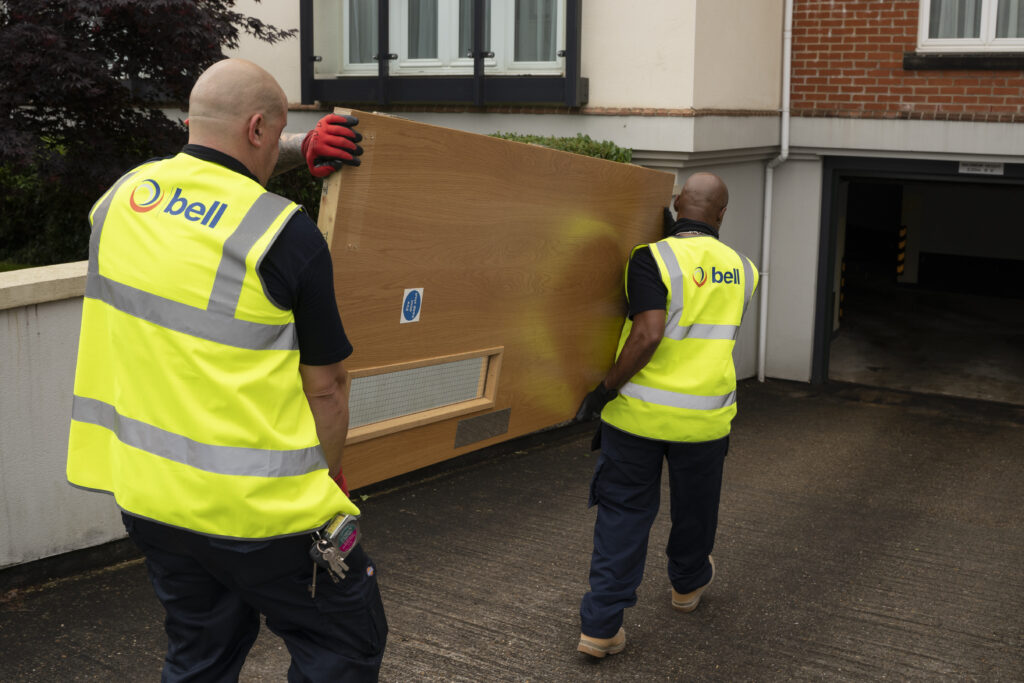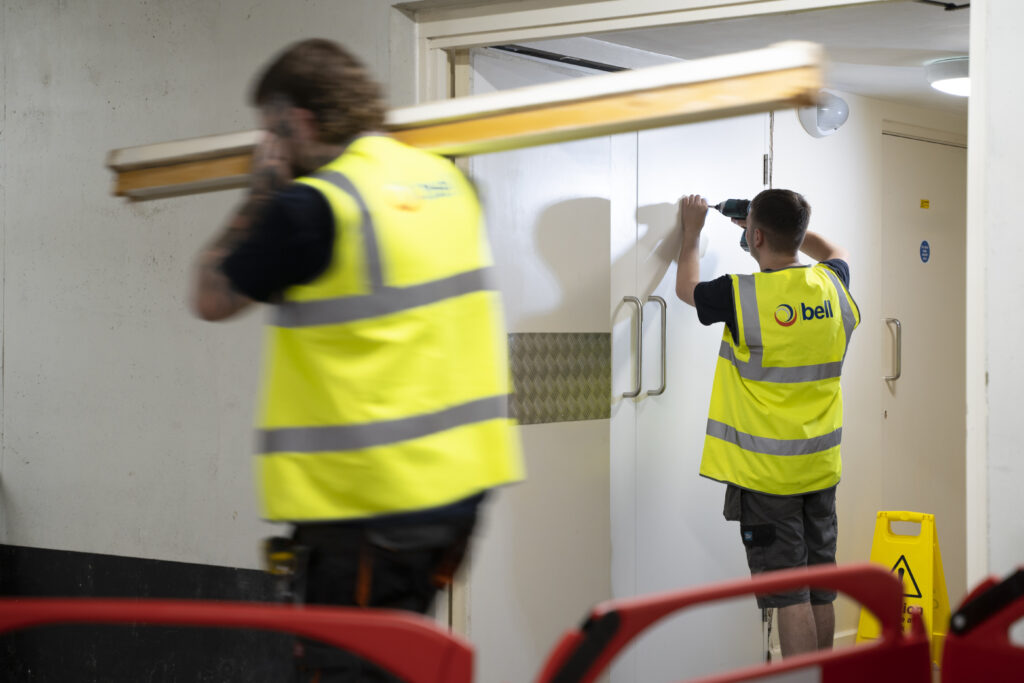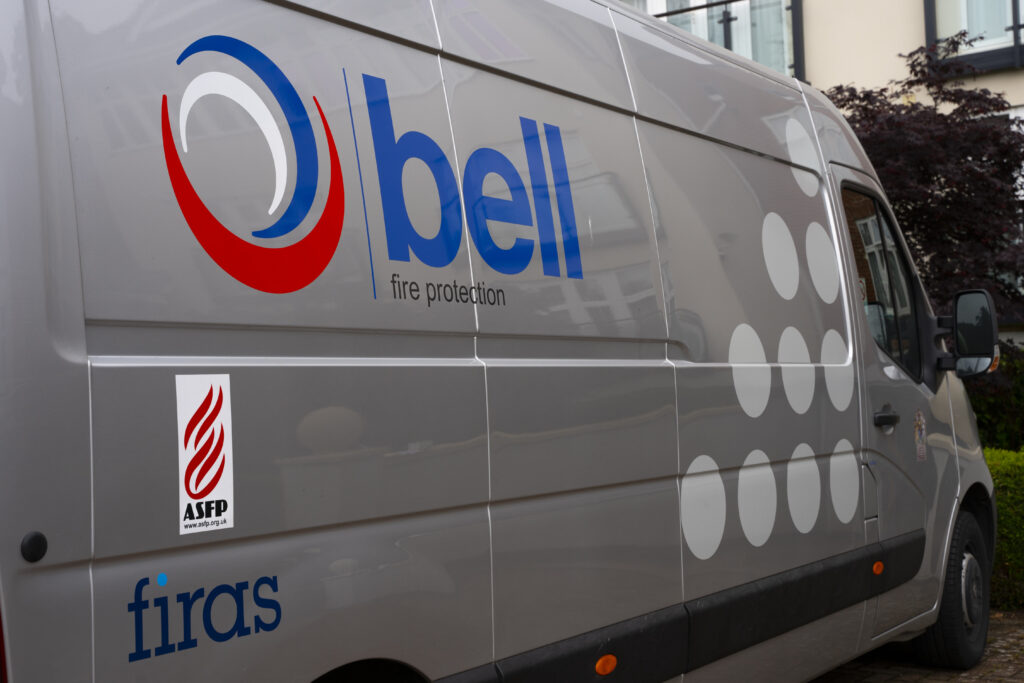Guide to Passive Fire Protection
A fire in your home or workplace can have devastating consequences, including damage or destruction of property, and injury or death. However, there are various active and passive fire protection solutions designed to protect yourself, others, and your property.
Overview of Passive Fire Protection
For many people, the concept of fire protection is limited to the best-known solutions, such as fire alarms and sprinkler systems, which fall under the umbrella of active fire protection. If that describes your idea, you’re probably wondering what passive fire protection is.
Passive fire protection is an umbrella term for structural measures used to decrease the risk of fires and fire damage. These solutions aimed at improving personal safety and reputational and financial losses due to property damage work in various ways. For example, load-bearing structural elements can be reinforced, and buildings can be divided into manageable spaces to limit the spread of smoke and flames.

Understanding Passive Fire Protection
As you may already have guessed, what passive fire protection is boils down to a simple principle, namely that impeding a fire’s progress allows some time for the building to be evacuated. A passive fire protection system uses stationary materials that have been specially designed to help stop or slow down the spread of flames or smoke through a building.
By doing so, the system contains the fire in the original area. The ideal situation would see active fire protection measures used while the fire’s progress through the building is impeded, as this can help put a fire out much faster than if you relied on one system only.
Components of Passive Fire Protection Systems
Passive fire protection systems can include a variety of components. However, most of the key components are built into the building itself. For example, the floors, walls, and ceilings of the building can be constructed from fire retardant materials rather than from flammable materials. Walls made from cinder blocks will contain a fire much more effectively than wood frame walls. This is one of the biggest differences between active and passive fire protection.
Construction materials aren’t the only passive fire protection solutions that can be incorporated into a residential, commercial, or other building. Firestops bring together fire retardant materials and building design. Well-made and properly installed firestops can contain a fire for up to four hours.
Types of Passive Fire Protection
These measures might not be as dramatic as some active fire protection systems, but they certainly are effective. Let’s take a closer look at what passive fire protection is by exploring different types:
Compartmentation/firestopping:
Contractors install specially designed barriers and partitions made of fire-resistant materials to create compartments within a building. This helps to contain fire and smoke, protect structural integrity, and create a clear escape route for people.
Fire-resistant materials:
Using fire-resistant materials in building construction is a good example of passive fire protection, as some materials are known to help prevent the spread of flames and smoke. Examples of fire-resistant and/or fire-retardant materials include brick and (to a lesser extent) mortar, stone, treated construction timber, treated structural steel, reinforced concrete, and reinforced glass.

Intumescent fireproofing:
Intended specifically for structural steel, intumescent fireproofing usually takes the form of a spray paint or a thin layer of film which is applied to steel. The intumescent coating’s chemical properties cause the coat to expand when exposed to high temperatures. This creates a protective layer around the steel structural elements, enabling them to withstand high temperatures for longer.
Smoke baffles:
Essentially glass curtains suspended from the ceiling, smoke baffles play a role in compartmentalising a building. Their role is to help prevent the spread of smoke and toxic gases that rise when a fire breaks out. This helps to protect people from smoke inhalation and property from smoke damage. Containing smoke in compartments also helps prevent sprinkler systems in other parts of the building from activating unnecessarily.
Fire curtains:
Also known as safety curtains, fire curtains are a bridge between passive and active fire protection. These deployable curtains are made from fire-resistant or fire-retardant textiles. They’re usually contained in a housing or headbox. When deployed, a fire curtain will descend from the ceiling, following lateral guides, to reach the closing strip or bottom bar on the floor. The curtain then forms an effective barrier to help compartmentalise the building and contain the fire.
Several different passive fire protection systems can be incorporated into a building to offer comprehensive fire protection. In the event of a fire, the various systems work together to contain the fire, prevent the spread of smoke, and potentially even channel it out of the building.
Active and Passive Fire Protection
It’s important to use a combination of active and passive fire protection systems for comprehensive fire safety and protection. Active fire protection requires an action to be taken, whether it’s in terms of detecting a fire, alerting others about a fire, or containing or putting out a fire.
Active fire protection systems can be automated, such as a smoke alarm or automatic sprinkler, or they can be digital or manual, such as a portable fire extinguisher that must be operated by hand. In passive fire protection systems, the structure or materials used play a role in limiting the spread of smoke and flames. A few common examples of active fire protection systems include:
Sprinkler Systems
Arguably one of the most common of all active fire protection systems, sprinkler systems are comprised of water storage tanks, fire pumps, control valve sets, flow switches, pressure switches, pipework, valves, and sprinkler heads. The four main types of sprinkler system include wet, dry, pre-action, and deluge.
Not all sprinkler systems use water to fight fire, as the type of building or its contents might suffer even greater damage from water. Some systems discharge foam, inert gases, or carbon dioxide. Most sprinkler heads have a glass container filled with a glycerine-based liquid, which expands when it comes into contact with heated air. The expanding liquid shatters the container and activates the sprinkler head.
Fire Alarms
Fire alarms detect flames, heat, and smoke and/or alert a building’s occupants and/or the fire department about a fire. Some fire alarms can also activate fire protection systems such as fire curtains, fire doors, or an aerosol fire suppression total flooding system.
Smoke detectors and heat detectors are simple forms of fire alarms. More comprehensive fire alarms include the following components: detection devices that detect an unusual amount of smoke or heat, audio devices that sound the alarm, a visual device such as a strobe or beacon, a control panel, and additional equipment such as controls to open roof vents or turn off the gas supply.
Fire Doors
Fire doors are another solution that bridges the gap between active and passive fire protection systems. Available in different grades, fire doors are made from layers of different materials. Common materials used include wood, wire mesh, gypsum, glass, steel, and vermiculite. Fire door grades are based on how long the door can withstand fire before they disintegrate.
These doors are usually triggered automatically when a fire alarm detects a fire. The doors close to prevent the fire from spreading. This is usually controlled by an electromagnet. The heat-sensitive seals around fire doors expands when heated to offer additional protection. When closed, fire doors act as a passive fire protection system.
Benefits of Passive Fire Protection
Passive fire protection systems offer numerous benefits. These include:
Protection of people, animals, buildings, and assets: By slowing the progress of fires, active and passive fire protection can help save the lives of people and animals and protect buildings and their contents.
Hinders the spread of fire: By slowing down a fire’s progress through a building, passive fire protection systems create a valuable window of time for people to evacuate and for emergency services to arrive.
Improves structural integrity: The fire-resistant materials used in many passive fire protection systems help prevent structural collapse that might otherwise happen if fire damages important structural elements. Without such protection in a multi-storey building, a collapse could lead to significant loss of life and damage to property.
Ensures legal and insurance company requirement compliance and lowers premiums: Installing active and passive fire protection in a building ensures that the building complies with UK law and with insurance company requirements. Most insurance companies consider buildings with these types of protection to be lower risk, which may result in lower insurance premiums or discounts.
Compliance and Regulations
As mentioned above, compliance with regulations in terms of fire protection is vital for the protection of lives and property. It’s also essential for the legal standing of the structure. The UK has numerous Codes of Practice related to active and passive fire protection. These include:
- HS(G)176 The storage of flammable liquids in tanks, HSE, 1998.
- LPGA COP 1 Bulk LPG storage at fixed installations. Part 1: Design, installation and operation of vessels located above ground, LP Gas Association, 1998.
- BS 5908 : 1990 Fire precautions in the chemical industries, British Standards Institution.
- HS(G)71 Chemical warehousing: the storage of packaged dangerous substances, HSE, 1998.
- CS21 Storage and handling of organic peroxides, HSE, 1991.
- BS 476 Fire tests on building materials and structures, British Standards Institution.

As important as active fire protection is, passive fire protection systems can go a long way to protecting people and property. It’s essential that you prioritise passive fire protection as an integral part of overall building safety.
Bell provides unparalleled fire safety through our comprehensive Passive Fire Protection services. We are experts in the installation of essential products like Penetration Seals, Fire Doors, and Cavity Barriers and our dedicated specialists ensure complete protection for both public and private sectors nationwide.
Our accredited installers, boast a minimum of 5 years’ experience and our Compliance Surveyors hold IFE certifications in passive fire protection from ASFP. We are also members of FIRAS and IFC, these third-party certification schemes are critical for ensuring the competency and reliability of fire protection contractors. Take a closer look at our offerings and uncover how we protect environments against fire hazards on our Passive Fire service page.
Contact Bell for a range of passive fire protection services that can safeguard your property and save lives.
